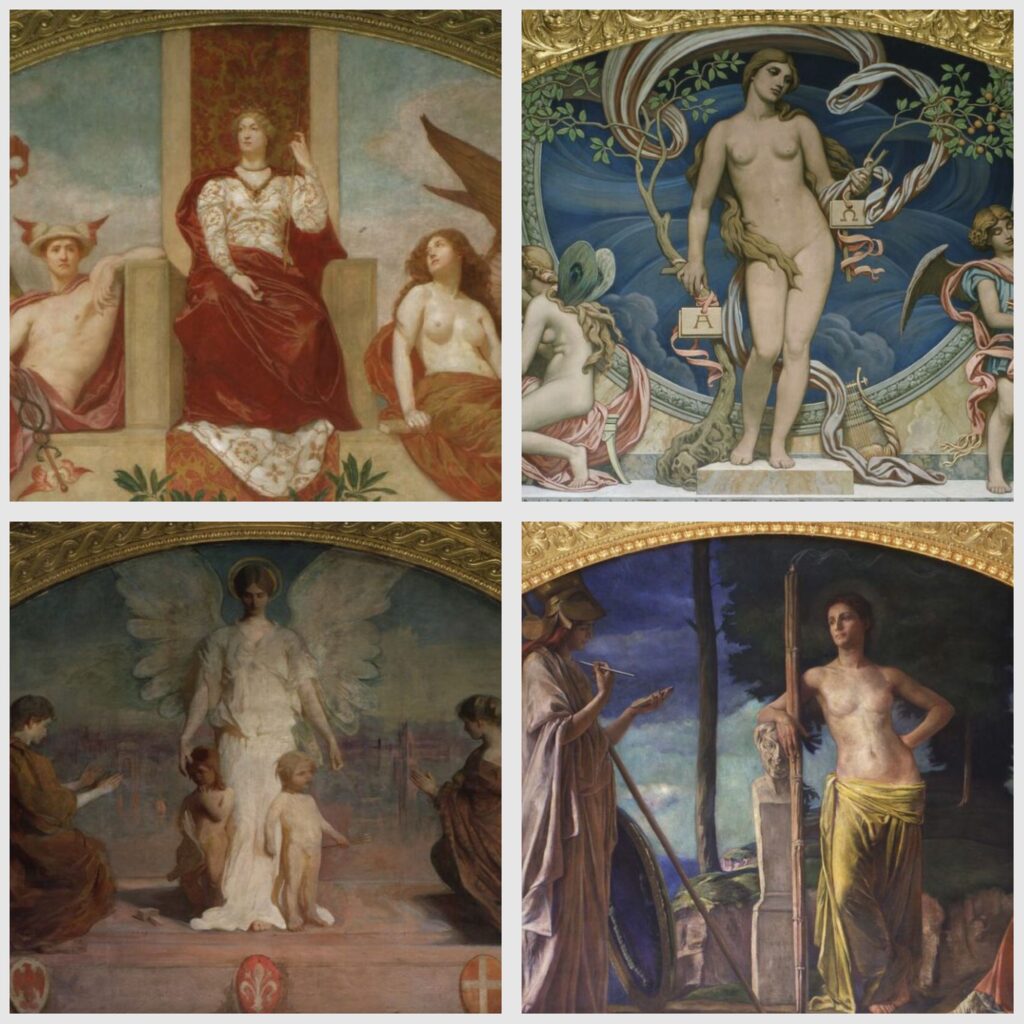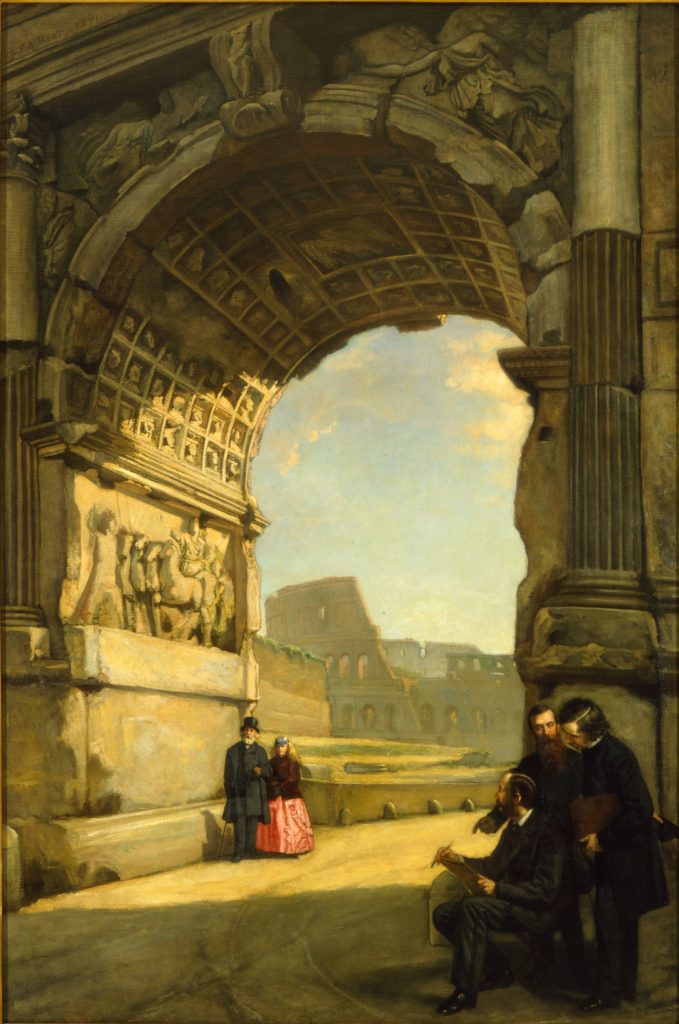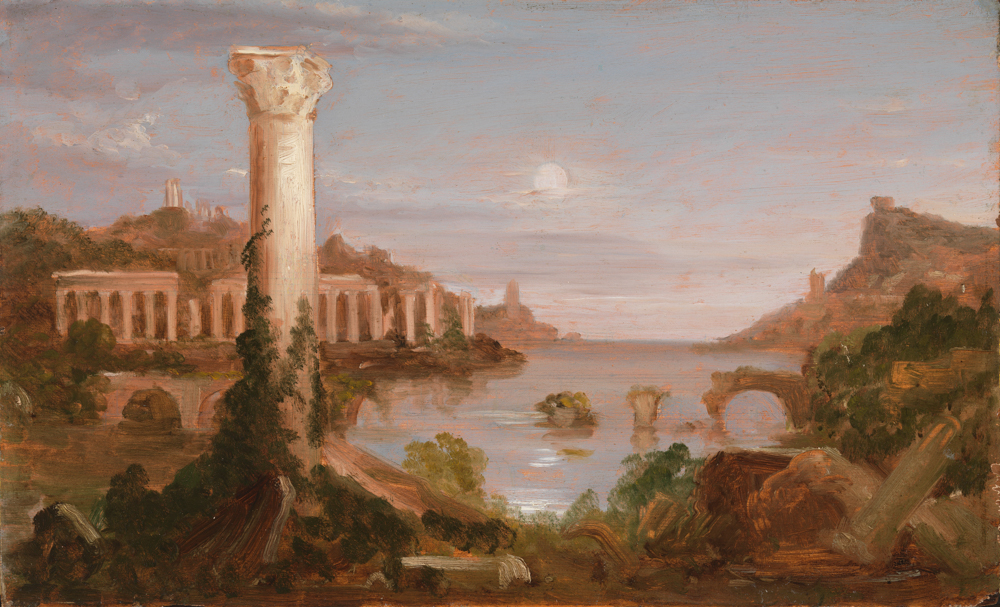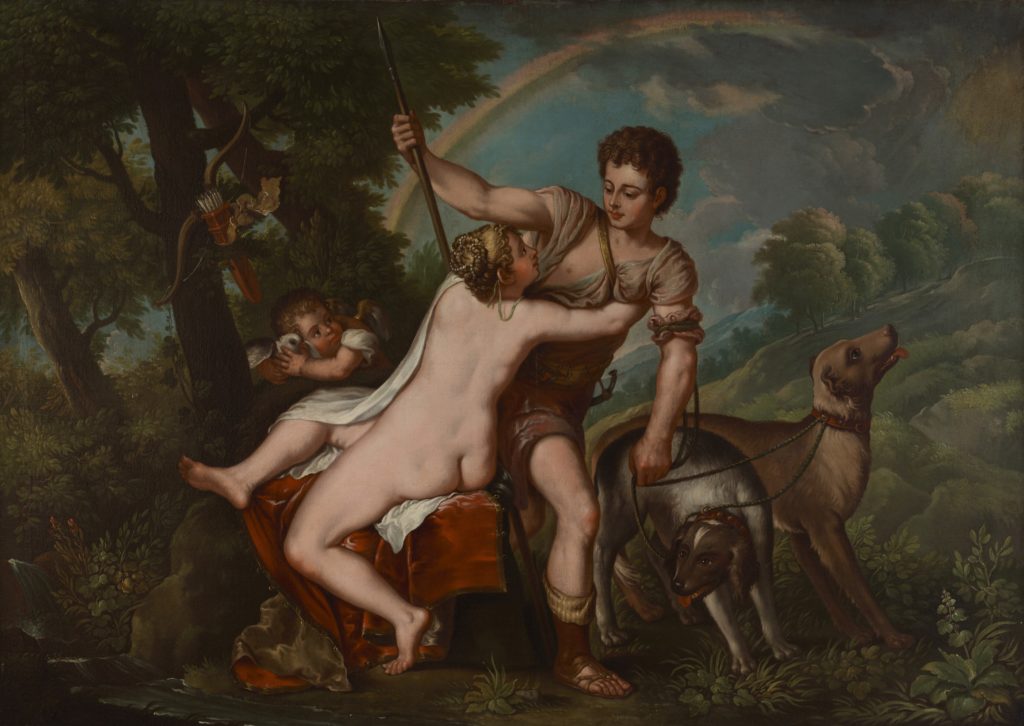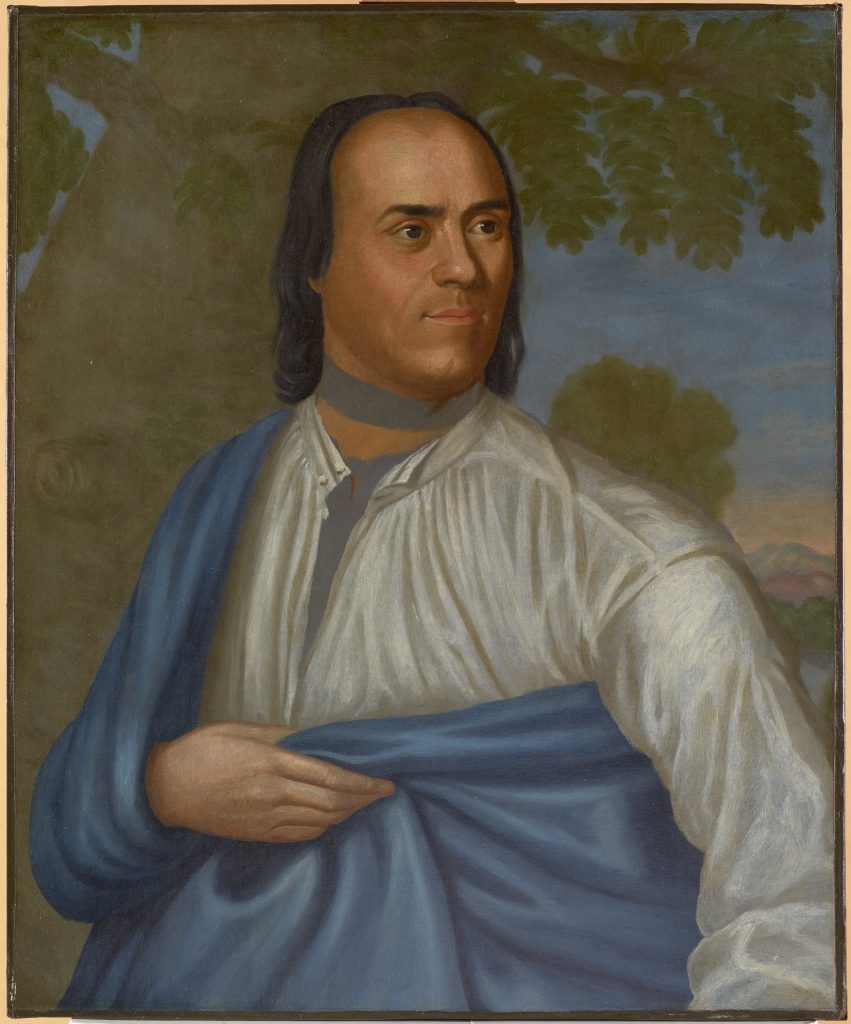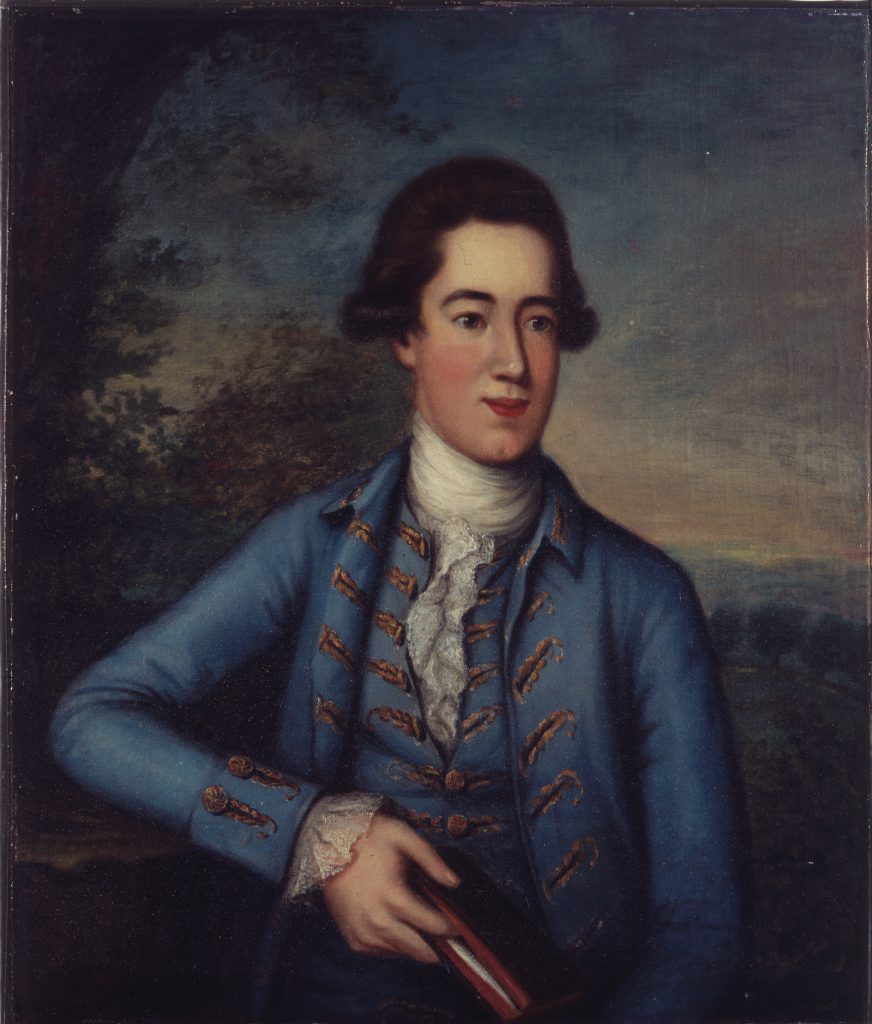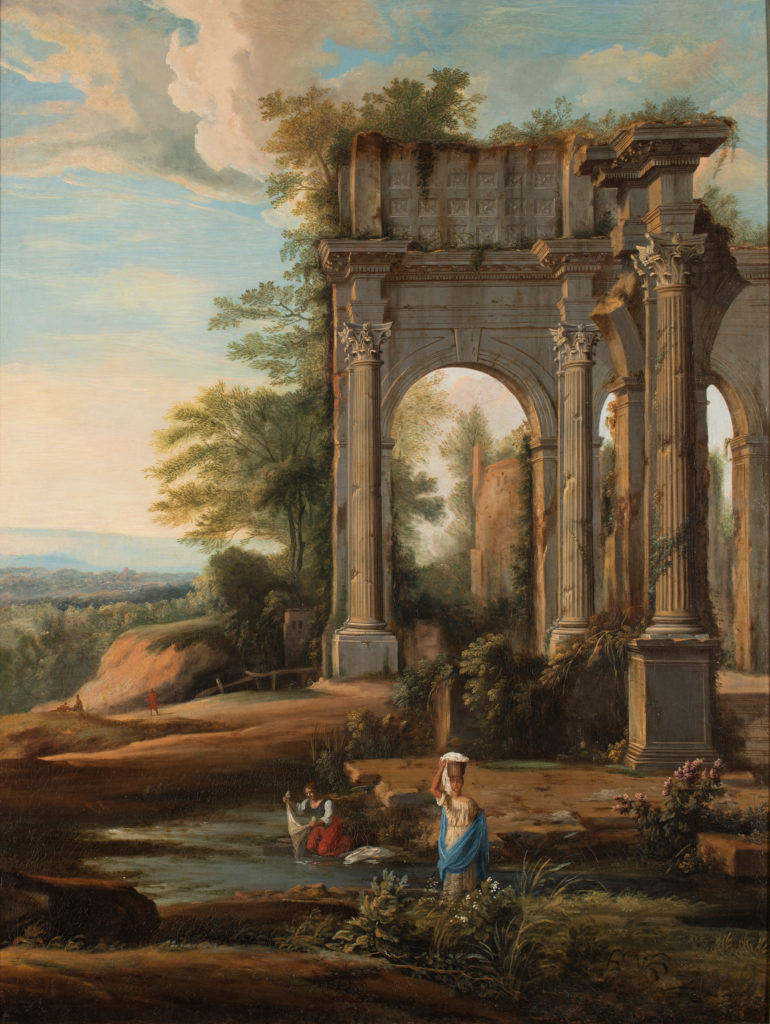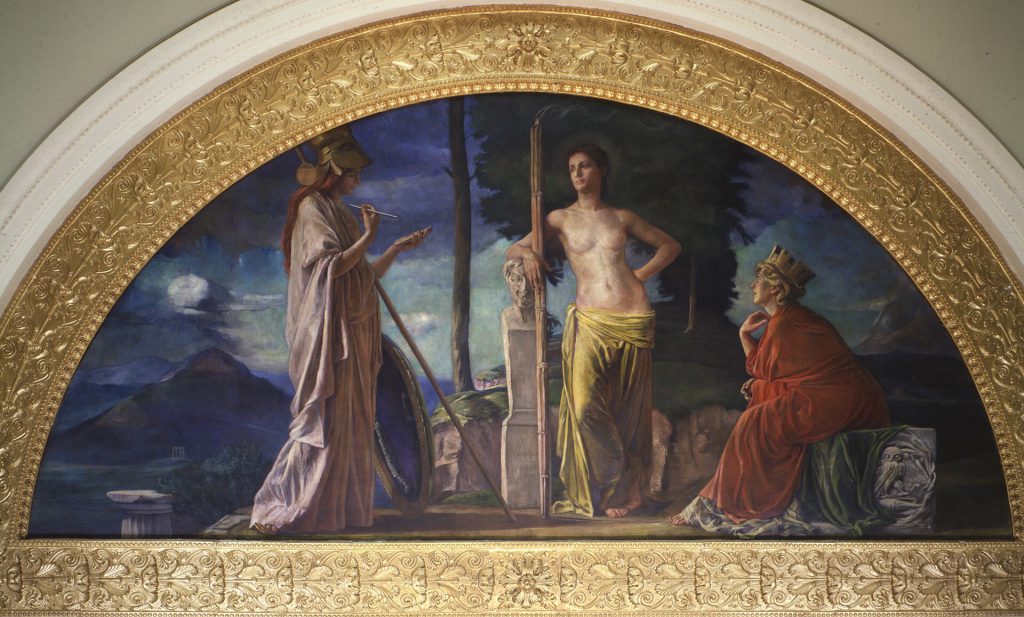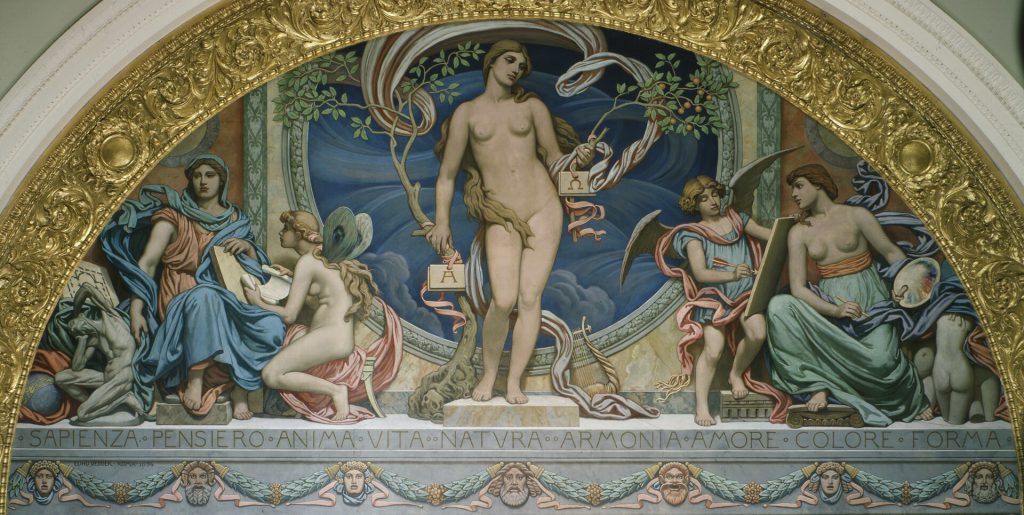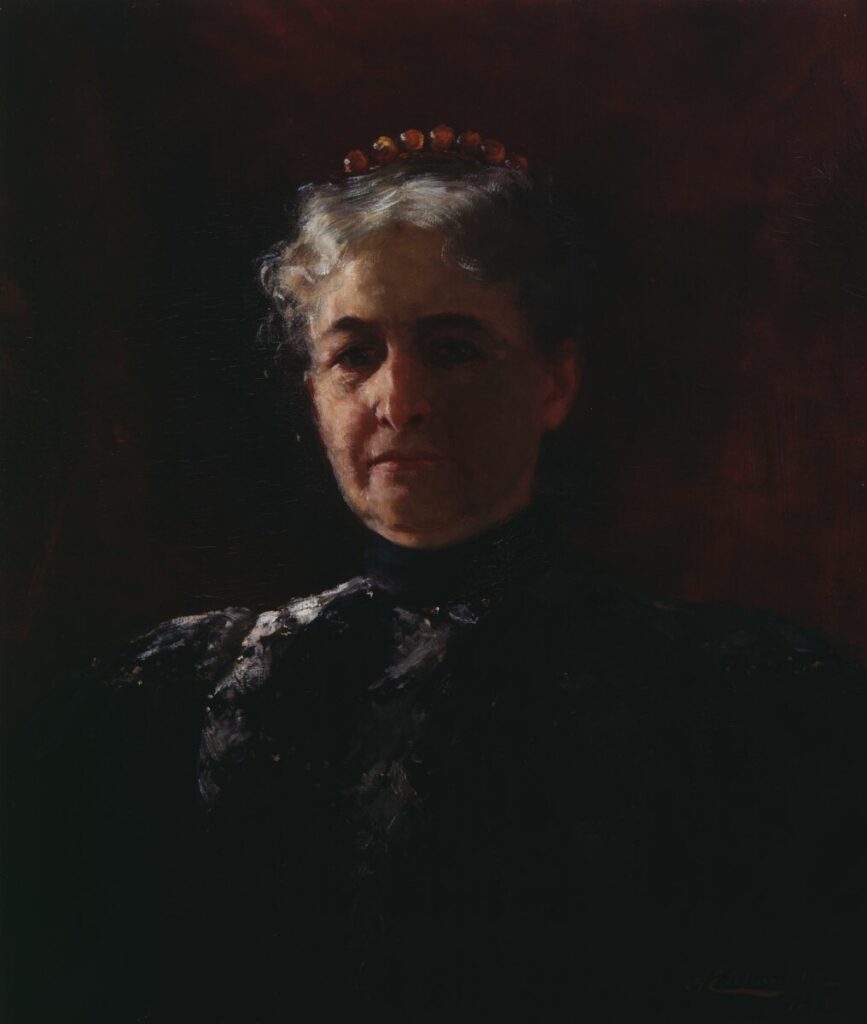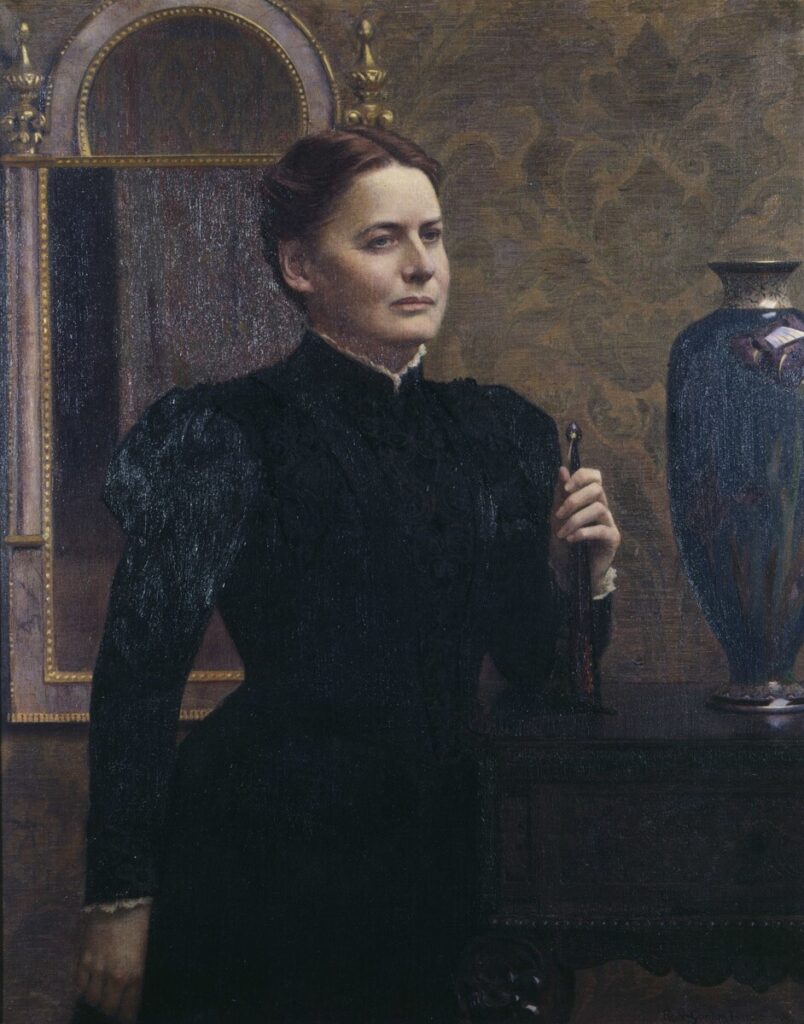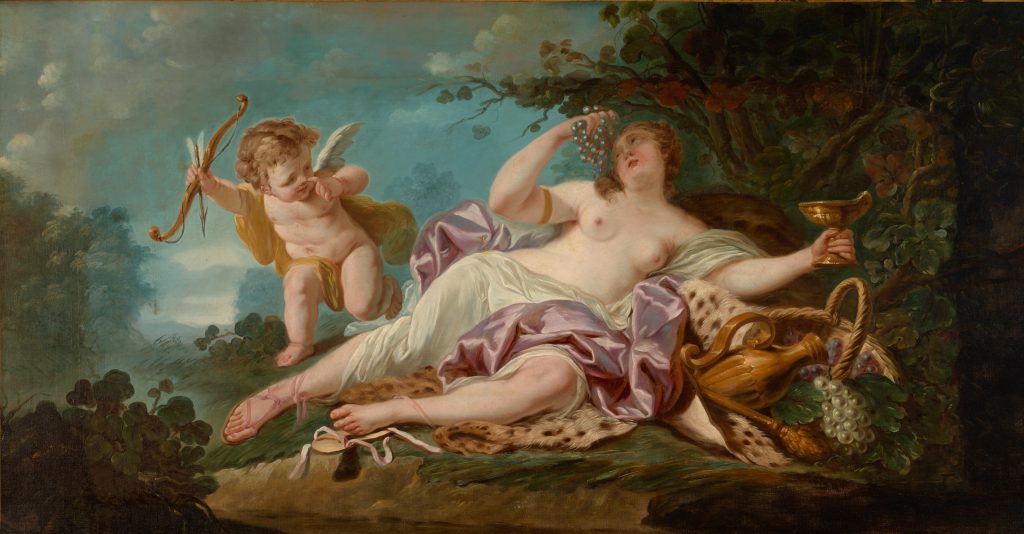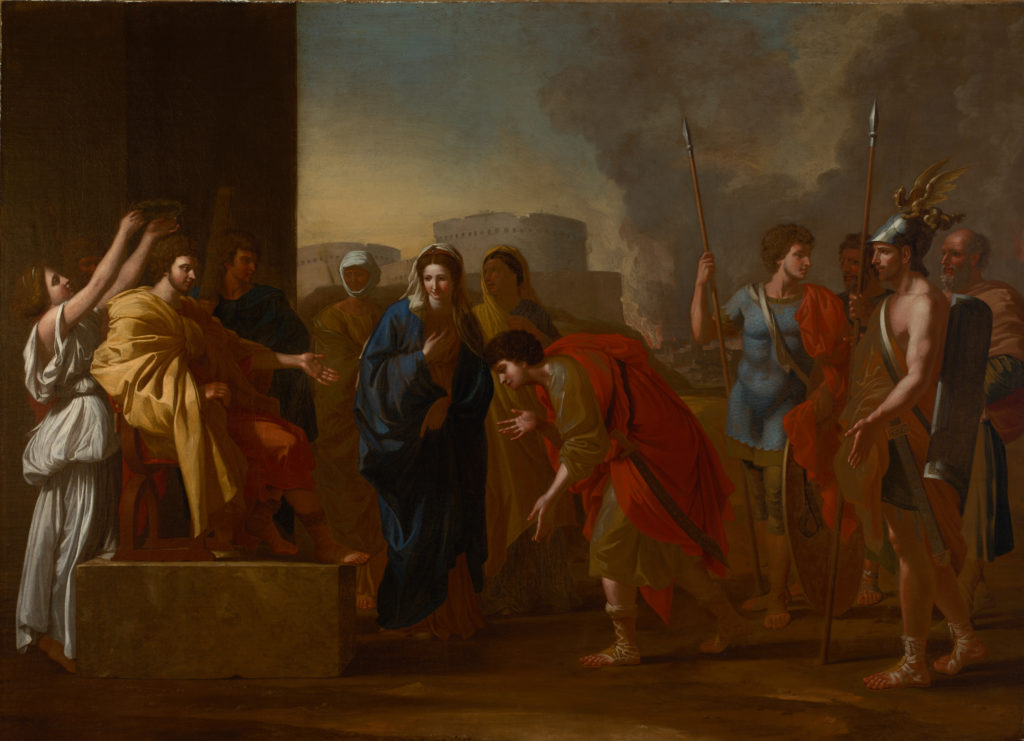
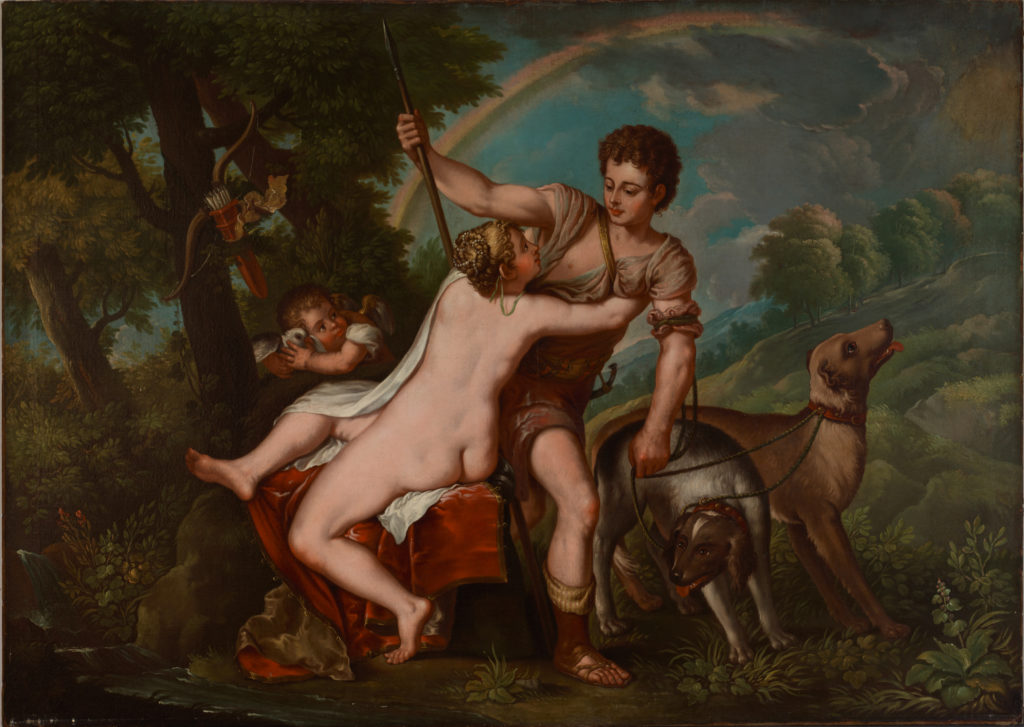
Bequest of the Honorable James Bowdoin III
1813.10John Smibert’s The Continence of Scipio illustrates the way that American artists, as well as the American public, derived their classicism first and foremost from European models. Smibert’s painting is a close copy after a painting made in 1640 by Nicholas Poussin (1594–1665). The painting tells the story of the Roman general Scipio Africanus, who, having just captured the city of Carthage, surveys the spoils of war. The moment of decision and high drama captured in this history painting is Scipio’s decision to return the beautiful female captive before him to her fiancé, a Carthaginian prince, rather than taking her for himself. The story, long popular in Europe, took on new meaning in America, where the self-control demonstrated by the Roman general provided an exemplum virtutis (an example of virtue) but also a parable of victory and conquest that held profound meaning for Americans after the Revolution.
Nicholas Poussin was a leading proponent of classical themes in French Baroque art, and his grand history paintings and scenes of classical mythology inspired generations of artists on either side of the Atlantic. The original painting, on which this copy was based, now hangs in the Pushkin State Museum of Fine Arts in Russia. The present copy, by Scottish born painter John Smibert, was likely made as part of his academic training and prior to his immigration to America. Indeed, Smibert was the first academically trained artist to paint in Colonial America. After accompanying Bishop George Berkeley across the Atlantic in a failed quest to found a new University in Bermuda, Smibert arrived in Boston in 1729 with plaster casts, including a bust of Homer, the Venus de Medici, and the Laocöon Group. These casts and the copies of major paintings that Smibert had done in Europe served as important resources for early American artists like Gilbert Stuart, exposing them to classicizing style and themes prominent in Europe. Bowdoin bought this copy from the studio of John Smibert, along with a number of drawings, which formed part of the Bowdoin bequest in 1811. In addition to cultivating aesthetic appreciation, it is likely that this painting was used to instruct students academically and morally in the early years of the College.
Collector
The son of the wealthy merchant and second governor of Massachusetts, James Bowdoin II, Bowdoin figured among a small group of leading figures who recognized the value of art in fostering enlightened ideals and philosophical contemplation among a budding republic.

